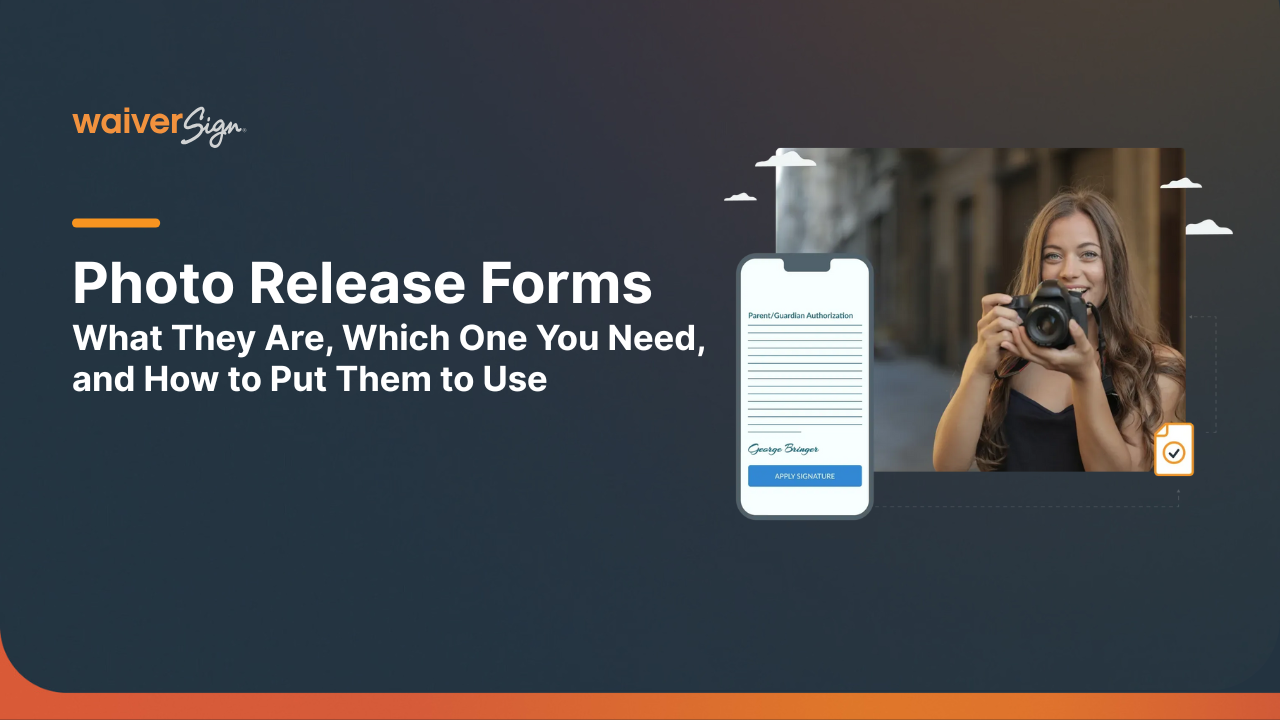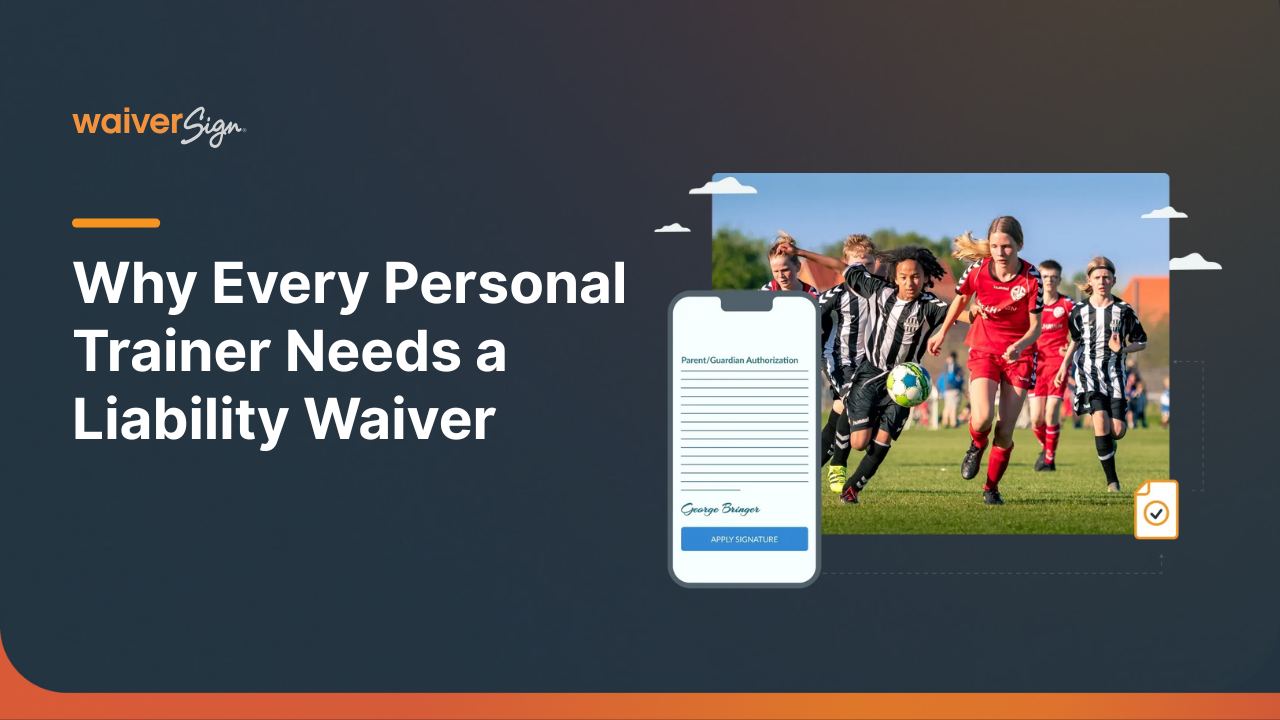What to Include in a Liability Waiver
CHUN T. WRIGHT
What to Include in Your Liability Waiver, and When to Have More Than One

Chun T. Wright
Washington DC-based attorney and former prosecutor at the US Attorney's Office, Chun serves as legal counsel to businesses across the country.

Liability waivers, also called liability releases forms, are routinely used by businesses. This includes travel companies, outdoor recreation businesses, outfitters, and now—because of COVID—an increasing number of businesses that may have not used waivers before.
In the travel and outdoor recreation world, businesses understand the critical role that liability waivers play to 1) educate travelers and participants about the risks of a trip or activity, and 2) protect businesses from legal claims that range from minor mishaps (e.g., small injuries) to catastrophic events (e.g., death).
But what you put in your liability waiver can mean the difference between winning a legal dispute, and closing up shop for good. In this post, we’ll discuss what’s most critical for a release to include, to help you make sure you’re better protected.
What To Include In Your Liability Waiver
Waivers (including digital waivers) are legally binding contracts in most states, but are strictly scrutinized by courts given the significant rights that consumers give up by agreeing to them. For this reason, your waiver, whether created from a template or custom-drafted for your business, should be well-written, clear and unambiguous, conspicuous, and presented as early as feasible to your customer.
Generally, a liability waiver should include the following provisions:
Risks
First and foremost, it should include a list of the representative inherent risks and any special risks of a trip and/or core activities in an itinerary. For instance, if whitewater rafting is an activity you offer, risks such as falling out of the raft, injury from contact with submerged objects, and drowning may be expressly mentioned. Risks of travel may include venturing into remote areas with a lack of access to medical facilities, encountering roads and other infrastructure that may not be to the same standards as the traveler's home country, and so on.
Liability Waiver Release
A release clause in which the participant or travelers expressly releases your business from claims for damages related to the risks of their trip and/or activities. This clause often begins with language similar to: "I, the traveler RELEASE, DISCHARGE, COVENANT NOT TO SUE AND HOLD HARMLESS Business A and its [list of all who are released]."
Be sure to categorically identify all individuals and entities that should be included in the release, e.g., owners, officers, employees, agents, representatives, related entities, independent contractors/sales representatives, volunteers, successors, and assigns.
"Successors and assigns" are often missing in liability waivers, but if you change your business entity or sell your business, a liability release that omits "successors and assigns" may not cover the new entity or successor business. This clause should stand out to the traveler/participant; use bolded language, larger type, and/or a different font to ensure that the traveler/participant's attention is drawn to it.
Assumption of Risk
An express voluntary assumption of the risk clause that states that the participant or traveler understands and voluntarily assumes the risks, both known and unknown, associated with the trip or activity. As with the release clause, the traveler/participant's attention should be drawn to this provision.
Indemnification
An indemnification clause is optional but common. This clause provides that the traveler/participant will pay for your defense costs and reimburse your business for any damages that it is required to pay if sued as a result of the traveler/participant's actions or inactions.
Forum/Venue Selection
A forum selection, venue, and choice of law provision. This provision sets out where disputes will be brought (your location will typically be preferred), what forum (e.g., state or federal court or arbitration), and what law will govern. Without this provision, if you and the traveler/participant have a dispute over these issues, you will have to litigate them in court.
The requirements for a waiver to be valid vary from state to state so it is very important that you consult your state laws and an attorney on what to include your liability waiver or release.
When You Want More Than One Agreement
A common question that businesses ask is "Can I just put the waiver in my terms and conditions?" While it is tempting to go that route with the thinking that "Hey, it sure is a lot easier to administer a single document,” and “Who wants to bother customers with more than one document?" don't cave in to the siren's call of convenience without considering all of the pros and cons of a single document.
On the con side, a key factor that courts examine in deciding whether to uphold a waiver is whether it is conspicuous, i.e., written or displayed in a way that a person would have noticed it. If a liability waiver appears in a terms and conditions agreement, it will probably be nestled in with payment and cancellation policies, baggage requirements, insurance expectations, passport and visa information, and other provisions that could make it much harder for you to claim that your liability waiver was conspicuous.
Why not make it easier on yourself and make it harder for someone to challenge your waiver on conspicuous grounds by making your liability waiver a standalone, separate agreement from your terms and conditions? This approach is one to seriously consider, especially given how digital waiver services can make it simple and seamless to present travelers/participants with multiple agreements.
Travel and outdoor recreation companies often have a suite of documents for travelers/participants to sign such as Traveler/Participant Information form, Images Release, Medical Consent and Questionnaire, and Travel Insurance Disclaimer. A digital waiver can easily be added to this suite without disrupting the customer onboarding process—though you should still speak with your attorney and business team for legal and business advice on how best to use and incorporate a waiver in your business operations.
By following these tips and considering whether to make your release of liability form a standalone document, you will make your business stronger and better able to protect itself from legal challenges.

See If WaiverSign Works For You
Don't wait to make the next step in streamlining your business.





























